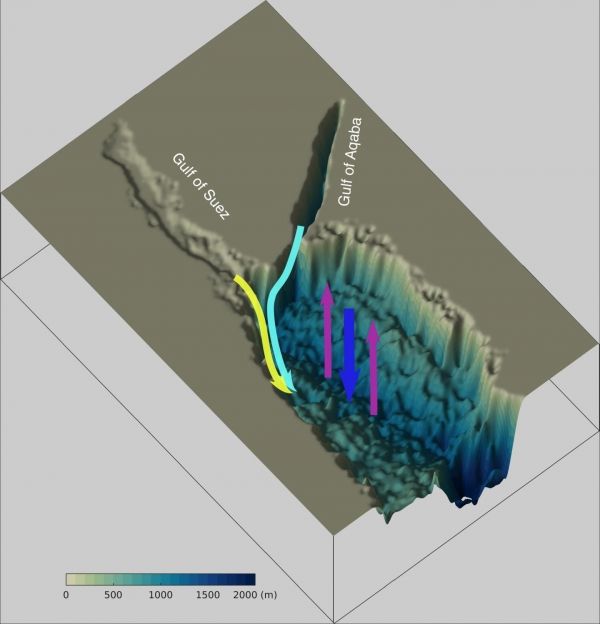Deep water in the Red Sea gets replenished much faster than previously thought and its circulation is directly affected by major climatic events, including volcanic eruptions, KAUST researchers have found.
Waters occupying depths from 300 to 2000 meters in the Red Sea are recognized as the warmest and saltiest deep water in the world, with near-homogenous temperatures above 20 degrees Celsius and salinities higher than 40.5 practical salinity units (psu). The world average for similar depths is 2.5 degrees Celsius and 35 psu.
Until now, research has suggested that the Red Sea’s deep water is relatively stagnant, taking some 36 to 90 years to renew, and that its main source of renewal is water flowing from the northern Gulfs of Suez and Aqaba into the sea’s main basin.
KAUST Associate Professor Ibrahim Hoteit, who specializes in earth fluid modeling, with Fengchao Yao, a physical oceanographer, used an ocean circulation simulator to gain further insight into the circulation of the Red Sea’s deep water.
Read more at King Abdullah University of Science & Technology (KAUST)
Image: Open-ocean deep convection is the main source of replenishment of the Red Sea's deep water, while flows of water in the Gulfs of Suez and Aqaba form secondary sources. (Credit: © 2018 Fengchao Yao)


